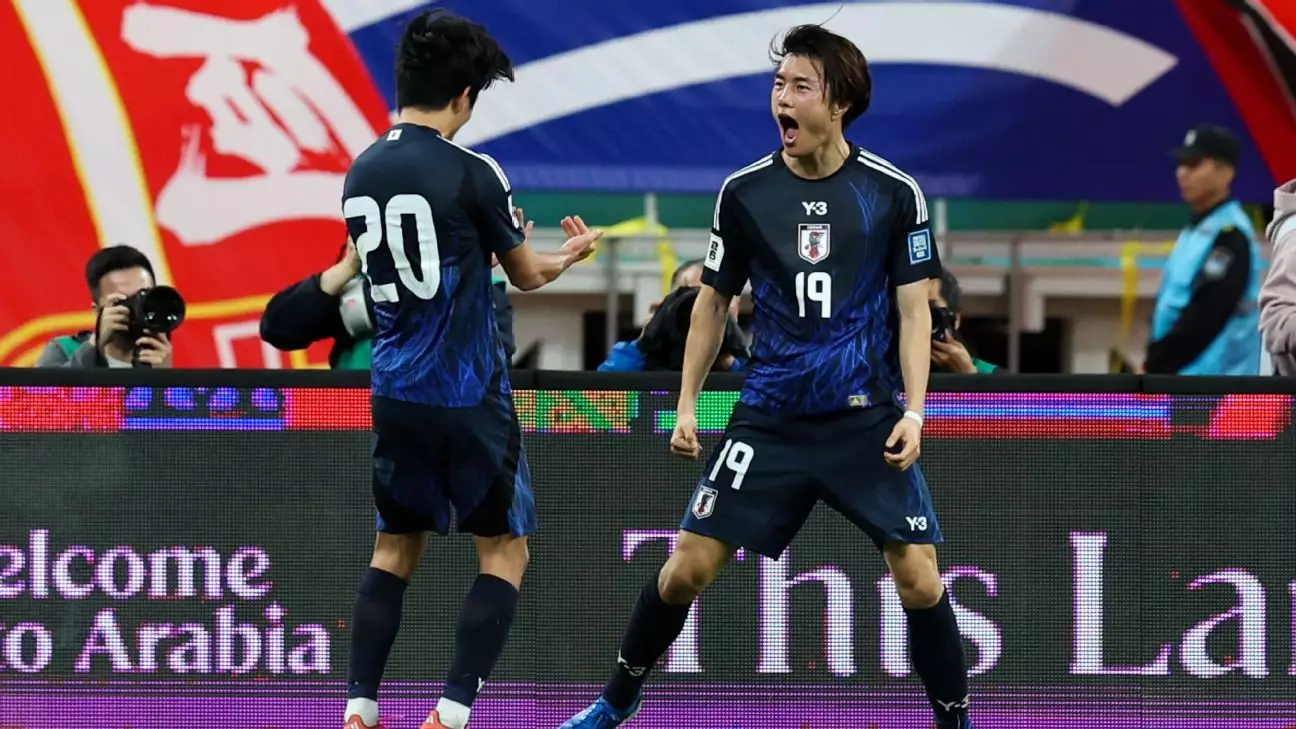As the Asian qualifiers for the 2026 FIFA World Cup progress, Japan’s national football team, known as the Samurai Blue, appears poised for a remarkable eighth consecutive appearance on the global stage. With a commanding lead of nine points at the top of Group C, the Japanese players have showcased their abilities and promise. They are simply dominating their opponents, and the path is clear to secure their World Cup berth. A potential clincher could come on March 20 against Bahrain, or just five days later during another home match against Saudi Arabia. However, the expectations of the Japanese football community have expanded beyond mere participation; there is now a collective ambition to not only participate but to win the World Cup itself.
Coach Hajime Moriyasu recently proclaimed this lofty goal, emphasizing an aspiration to achieve what no Asian nation has done thus far: lifting the World Cup trophy. While his statements may seem ambitious, they resonate with the Japan Football Association’s long-term vision encapsulated in their “JFA Pledge for 2050,” aiming for World Cup glory within the next few decades. Furthermore, targeting the semifinals in 2030 establishes a clear trajectory for improvement, urging the team to advance beyond their historical limitations, as they have never transcended the round of 16 in their World Cup history.
One pivotal consideration in Japan’s pursuit of greatness is the strength of their starting lineup. In recent years, especially during the previous World Cup, they demonstrated they could compete against the world’s finest teams. Victories over football powerhouses Germany and Spain showcased their potential, even if they eventually fell to Croatia in a penalty shootout. The core of their squad incorporates a blend of talents from Europe’s top leagues, presenting an exciting mix of experience and youthful vigor.
Moriyasu’s current preferred formation includes players like Zion Suzuki, who guards the net with adept skill, complemented by a solid three-man defense comprising players from respected clubs. The midfield features strong personalities like Wataru Endō of Liverpool, providing stability and creativity, while their offense showcases notable talents such as Takefusa Kubo and Takumi Minamino. While Japan’s players may not rival those of elite European or South American teams just yet, their collective endeavour and teamwork could bridge the gap as proven in recent fixtures.
However, it becomes increasingly important to note that having a strong starting XI may not be enough. The depth of talent available to the coach can significantly influence the team’s prospects, especially during a demanding tournament like the World Cup.
Japan’s reserves present a double-edged sword. On one hand, players such as Daizen Maeda and Reo Hatate possess impressive credentials, even if their performances on the international stage have not yet reflected their club successes. On the other, a lack of seasoned alternatives to key players could spell trouble during critical moments in the competition.
The absence of several influential players due to injuries further emphasizes this concern, as coach Moriyasu should still rely on veteran players like 38-year-old Yuto Nagatomo, who, while performing well domestically, cannot provide the same energy as younger prospects. The need for a wider talent pool becomes evident; competition for starting positions is crucial for driving performance at every level.
The path forward involves nurturing emerging talent while having dependable stalwarts ready to step in at a moment’s notice, a balance that has historically eluded the Samurai Blue.
Moriyasu’s strategic mindset also plays a critical role in Japan’s evolution as a footballing nation. Early in his tenure, he leaned heavily on counter-attacking football, reflecting a cautious approach against more illustrious teams. However, following his World Cup successes, there are signs of maturation in his tactical philosophy. The incorporation of aggressive offensive players, like Kaoru Mitoma and Ritsu Dōan, has led to a thrilling style of football that embraces risk and creativity.
Moving forward, Moriyasu must weigh the right balance between an aggressive offensive strategy and the defensive stability necessary in high-stakes matches, especially when facing world-class adversaries. The ability to adapt during games will be instrumental for Japan as they aim to cement their status among the world’s elite teams.
The cultural roots of Japanese football nurture a narrative around respect and humility. However, this renowned humility must coexist with a newfound belief in the team’s strength. To evolve into a formidable competitor, Japan must channel a spirit of confidence, coupled with a fighting mentality that whispers of their potential to triumph against any opponent.
Thus far, their qualifiers have witnessed promising displays of dominance, and maintaining this momentum will be crucial. The Samurai Blue’s cold-blooded approach during significant victories indicates a burgeoning self-belief that may mark the beginning of a new chapter in Japanese football.
As they strive to confirm their World Cup placement in the coming months, the team stands poised to showcase their remarkable growth. While lifting the World Cup may still appear distant, setting sights on reaching the quarterfinals for the first time is not merely aspirational; it is an essential step in solidifying Japan’s legacy in world football.
